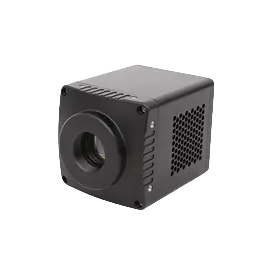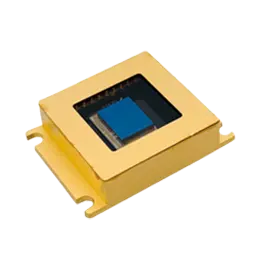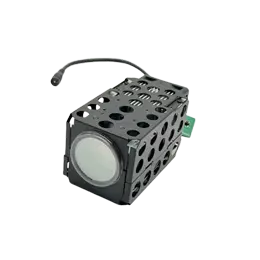Short-Wave Infrared (abbreviated SWIR, typically referring to light with wavelengths of 0.9~1.7μm) is a type of light with a longer wavelength than visible light. This light cannot be seen with the "naked eye" nor detected with "ordinary cameras". Due to the material properties of the objects being detected, some characteristics that cannot be seen under visible light can appear under near-infrared light. Therefore, the features of objects can be detected using short-wave infrared cameras.
GHOPTO short-wave infrared cameras have a unique characteristic: they can image through glass, making them suitable for a wide range of applications and industries. This ability also allows short-wave infrared cameras to be installed within a protective window, providing great flexibility when fixing the camera system onto a potential platform.
Currently, SWIR camera technology is widely used in industries such as aerospace, biology, medicine, outdoor surveillance, and cosmetics, among others. The two primary application markets for SWIR image sensors are semiconductor inspection and food inspection, which account for 40% and 30% of the market share, respectively.
Various resolutions: 1280x1024 / 640x512 / 320x256, pixel size 15μm.
High dynamic range (>70dB)
Response wavelength range 900~1700nm, expandable to 400~1700nm
The minimum integration time of 5us, high frame rate, externally triggerable
First-stage TEC cooling, low dark current, doubled signal-to-noise ratio
Compact size, easy to integrate, provides a feature-rich SDK, supports secondary development
Multiple output modes: USB2.0 / USB3.0 / CameraLink / GigE
Semiconductor Wafer Inspection
A wafer is a thin substrate of semiconductor material used to manufacture electronic integrated circuits. There are various types of semiconductor materials, among which silicon (Si) is the most commonly used. During the production process, wafers may develop various defects, such as cracks induced by cumulative residual stress at various stages. If these defects are not detected before subsequent IC manufacturing steps, they will affect the final yield of IC chips, increasing manufacturing costs. By leveraging the characteristic of short-wave infrared light penetrating silicon wafers, SWIR InGaAs camera technology can detect internal defects in silicon wafers, preventing defective wafers from entering subsequent stages and significantly reducing manufacturing costs.
Spectral Applications
Based on the spectral characteristics of different materials in the short-wave infrared range, short-wave infrared products can be applied to spectral sorting, plant moisture monitoring, and mineral type identification, achieving refined sorting of crops. Thus, short-wave infrared cameras are widely used for sorting grains, tea leaves, plastics, plastic solid waste classification and recycling, precision irrigation of crops, and mineral distribution exploration.
Imaging Applications of SWIR Camera Technology
Compared to long-wave infrared imaging (LWIR, thermal imaging), SWIR camera technology is more akin to visible light imaging. For instance, short-wave infrared light can be reflected, transmitted, or absorbed by objects. For high-temperature targets above several hundred degrees Celsius, short-wave infrared temperature measurement has advantages over the currently commonly used uncooled long-wave infrared temperature measurement, such as stable measurement, high accuracy, and fast response. Using short-wave line scan cameras to image and measure the temperature of fast-moving objects on a conveyor belt can greatly eliminate trailing effects, resulting in clear images and accurate temperature measurements in the short-wave infrared range.



